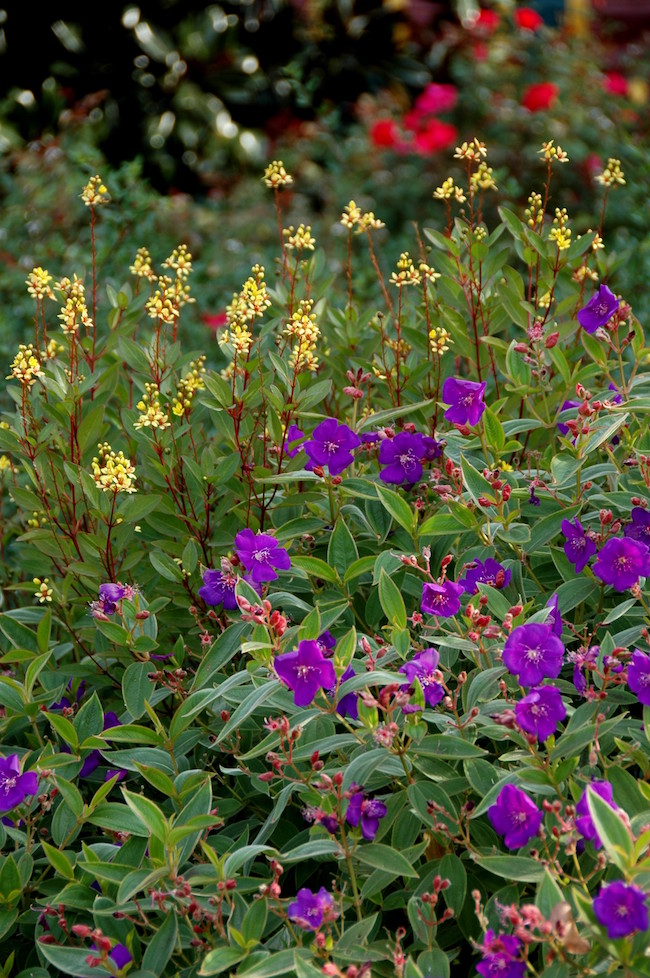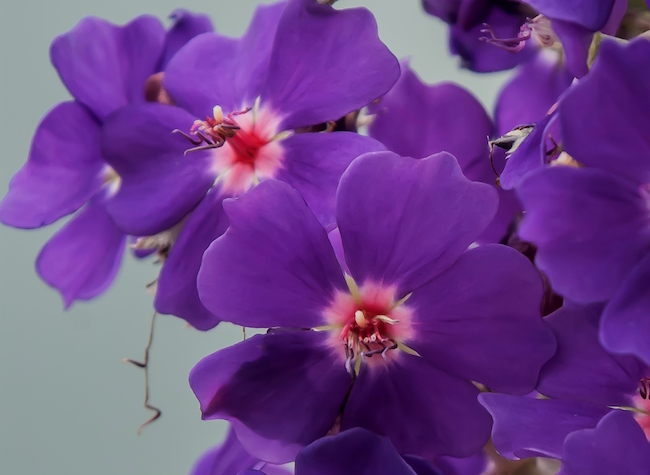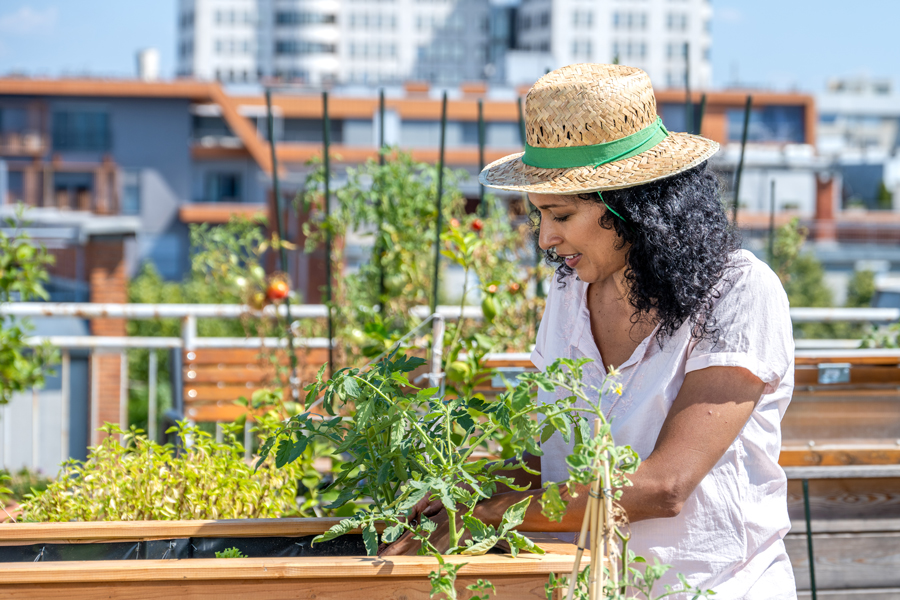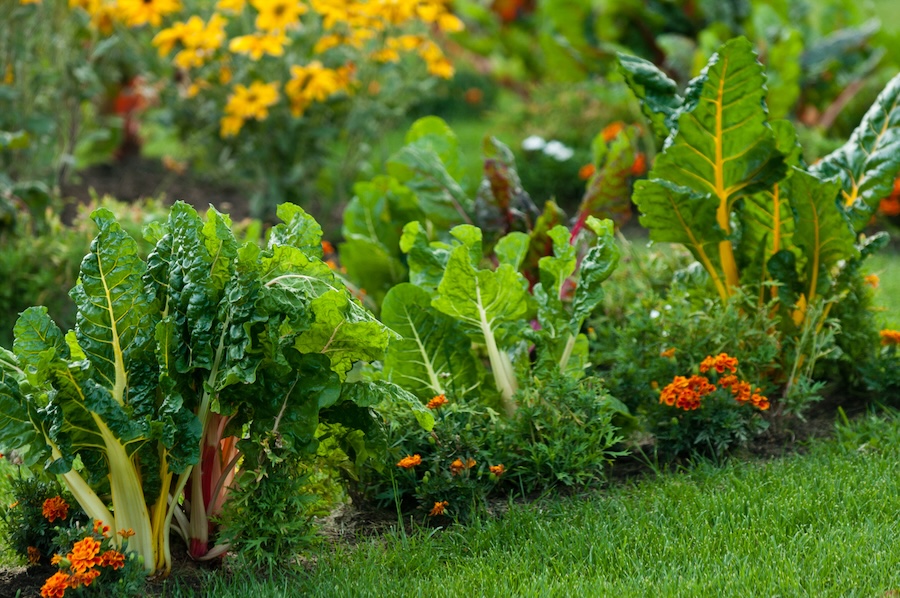The princess flower is the perfect name for this plant. With loads of uncountable blossoms of royal purple. It’s unchallenged in its status as the most beautiful plant of late summer and fall gardens.
Botanically speaking, the princess flower is known as Tibouchina urvilleana and is native to Brazil, the site of the current Olympics. The family name is Melastomataceae, and other species are most likely quite rare at your local garden center. If you can name even one more member, you are probably a horticulturist.
Here at the Coastal Georgia Botanical Gardens at the Historic Bamboo Farm in Savannah, Georgia, we do have two other family members: the large-leaved or silverleafed princess flower, Tibouchina heteromalla, also from Brazil, and the extraordinary pink lantern, or Medinilla magnifica, from the Philippines. Neither are as cold hardy as the regular princess flower, but both are visually outstanding. The pink lantern, which we are growing in a large basket, has really captured my attention.
The princess flower is winter hardy in zones 9 through 11, but here in Savannah, where I garden, it dies to the ground, returning with vigor in late spring. The same was true for me in Columbus, Georgia. At my home, they are now 5 feet tall and loaded with innumerable royal purple blossoms that glow almost iridescently and will dazzle and mesmerize until a killing frost.
While my plants in zone 8 in Savannah are 5 feet tall, in their native Brazil and similar climates they will reach 12 to 18 feet, which is, simply put, a breathtaking sight. The leaves are velvety, deep green and oftentimes lined with orange along the margins. In the fall, the leaves will change to an orange bronze. It blooms best in full sun, though a little afternoon shade is certainly no problem. The soil should be fertile, organically rich and very well drained. Soggy conditions quickly prove fatal, so plant on raised beds if your drainage is suspect.
It is not very hard to grow the princess flower in a container or to dig and overwinter the plant. The most serious requirement is to not overwater. Keep it dry during the winter. Those of you who like to propagate plants will find it easy to root from greenwood-type cuttings placed in moist sand in a shady location or to separate spreading shoots that develop.
The purple is so vibrant that choosing your flower combinations is quite easy except that everything seems to look great. You will no doubt note that many consider the flowers to be blue. I can buy that for a couple of reasons. First, as a horticulturist there is an unwritten rule: If it is not orange, then we have the right to call it “blue.” Secondly there is the outstanding dwarf selection known affectionately as “Athens Blue.” Most of the time I see purple in my eyes and in photographs, too.
No matter what color you see, the princess flower is stunning. I am growing a half-dozen of them and each combination seems to be a Kodak moment. In one area I have the exotic, flowered, pink ‘South Pacific Sipper’ hibiscus. The pink and purple is eye-catching, to say the least. In another area, I have a gold blooming milkweed for a superb complementary color scheme. But if you want to look like a landscape pro, try growing blue with the purple. I’m using ‘Mystic Spires Blue’ salvia. There is just something special about putting blues and purples together.
You’ve also got to consider the golden thryallis, Galphimia glauca, as a partner. With hundreds of small, soft, golden blooms, it seems as though it was created just for a princess flower marriage. It too is a zone 9 through zone 11 plant, root hardy in zone 8 and superb in a container for overwintering.
Lastly, as fall planting time arrives, there are some great combinations to be had, such as growing the tall cut flower ‘Amazon Rose Magic’ dianthus as an understory planting to the taller princess flower. If you are in Savannah, like me, you are probably muttering that the summer has been relentless. Just about the time we feel like throwing in the proverbial “garden towel,” the princess flower starts to amaze and causes us to linger, taking in all its beauty. I hope you will give it a try.
Follow me on Twitter @CGBGgardenguru and learn more about the Coastal Georgia Botanical Gardens at the Historic Bamboo Farm at www.coastalgeorgiabg.org/.





